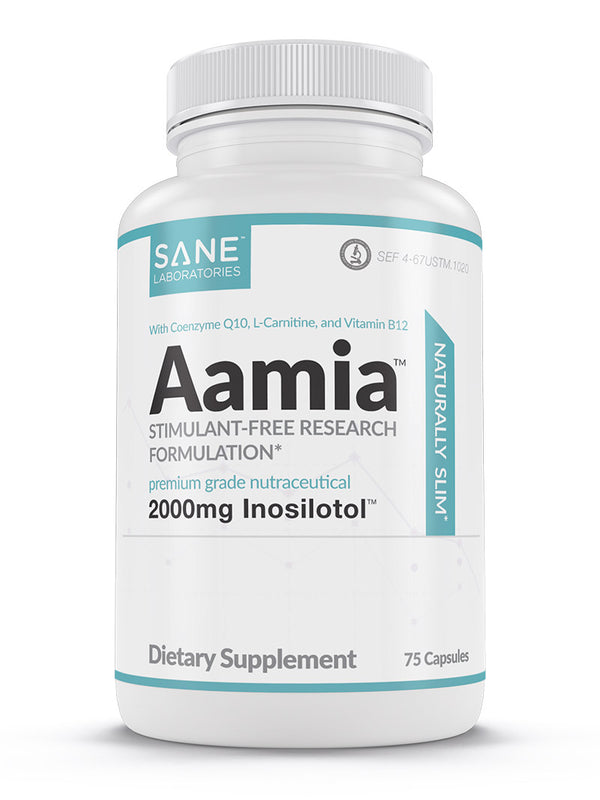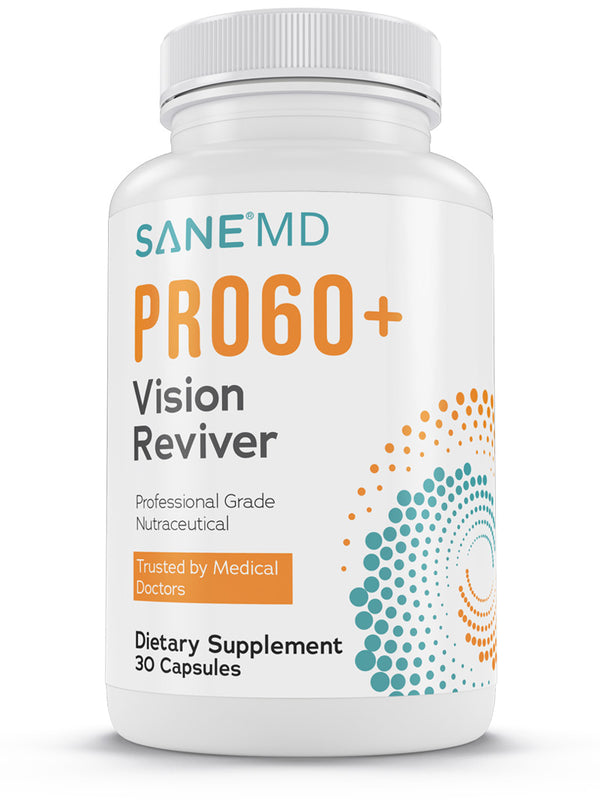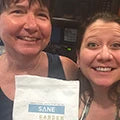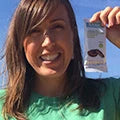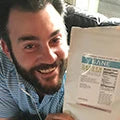For many, type 2 diabetes feels like a permanent diagnosis. However, recent research has shown that it doesn’t have to be that way. Achieving remission—meaning your blood sugar levels are normal without needing diabetes medication—can be a reality through a holistic approach that focuses on improving metabolic health and making sustainable lifestyle changes.
Click here to learn more about Aamia® and to place your order now while supplies last!
Let’s break down what it actually means to reverse type 2 diabetes and explore how it might be possible. Can you reverse type 2 diabetes? While it is not a cure, certain lifestyle changes, such as weight loss and diet modifications, can help some individuals manage their condition effectively.
What Does Type 2 Diabetes Remission Mean?
In simple terms, remission in type 2 diabetes means your blood sugar levels stay within a healthy range, and you don’t need medication to manage them. However, type 2 diabetes is a chronic disease that requires long-term management even after achieving remission.
Here’s what that looks like, according to experts like the American Diabetes Association and leading diabetes researchers:
-
Normalized Blood Sugar Levels: To be in remission, you’ll want your fasting blood glucose to be below 126 mg/dL, and your HbA1c (a measure of average blood sugar over a few months) should be under 6.5%—all without the help of medication. You’ll need a blood test to confirm these.
-
Sustained Over Time: Achieving remission isn’t just about hitting these targets once. Your normal blood sugar levels need to be maintained for at least six months without relying on diabetes medication.
Criteria for Type 2 Diabetes Remission
Achieving remission from type 2 diabetes is more than just seeing better numbers on your blood tests. Here are the key criteria to meet:
-
Duration of Normal Blood Sugar: You’ll need to maintain non-diabetic blood sugar levels consistently for at least six months. This means keeping your blood glucose within the normal blood glucose levels range to avoid higher readings associated with insulin resistance.
-
Absence of Diabetes Medication: During remission, you won’t need blood sugar-lowering medications, like insulin, to keep those levels in check.
-
Lifestyle-Driven Improvements: Remission isn’t just about avoiding medication; it’s about focusing on long-term improvements. This includes optimizing your nutrition, increasing physical activity, and working on overall metabolic health—often leading to weight loss as a byproduct.
Roadblocks to Remission
While achieving remission is possible, it’s not without its challenges. Here are some roadblocks you might face along the way:
-
Metabolic Dysfunction: Type 2 diabetes is closely tied to metabolic imbalances. Correcting this often requires serious lifestyle changes, and in some cases, people even opt for bariatric surgery to address both weight and metabolism issues that seem out of control.
-
Setpoint Weight: Your body’s “setpoint” weight—the weight your body seems to naturally maintain—can make losing and keeping off excess pounds a struggle. Hormonal imbalances need to be addressed to make lasting changes.
-
Nutritional Misconceptions: There’s a lot of confusion about what constitutes healthy eating. Many people rely on high-carb, low-fat diets, which can actually worsen insulin resistance and make managing blood sugar harder.
-
Weight Gain from Treatments: Certain diabetes treatments can cause weight gain, which may worsen glucose control and complicate diabetes management. This makes weight management a crucial aspect of achieving remission.
If type 2 diabetes is something you’re living with, know that remission is achievable. Yes, you may need to start with glucose-lowering medications, but as you work toward reversing the disease, it’s possible to reduce or even eliminate them over time.
By addressing the root causes through a holistic, lifestyle-driven approach, you can regain control of your health, minimize your dependence on medication, and lower your risk for other chronic conditions.
Stay tuned as we explore 14 holistic ways to reverse type 2 diabetes and empower you to take charge of your well-being.
Lifestyle Changes for Type 2 Diabetes Remission
Reversing type 2 diabetes goes beyond just watching what you eat and getting some exercise. It’s about making small but meaningful lifestyle shifts that can make a big difference in managing your blood sugar and improving your overall health. These changes can even lead to the remission of diabetes, where blood glucose levels normalize without the need for medications.
Here are some lifestyle changes that can help set you on the path to lasting diabetes remission:
1. Improve Sleep Quality
Getting quality sleep is more important than you might think when it comes to regulating blood sugar. Aim for 7 to 9 hours of uninterrupted sleep each night. Try winding down before bed by avoiding screens for an hour, keeping your room cool and dark, and using relaxation techniques like deep breathing.
Why does this matter? Poor sleep has been linked to insulin resistance, so making sleep a priority can go a long way in maintaining healthy blood sugar levels.
2. Reduce Chronic Stress
Long-term stress can cause your blood sugar to spike due to elevated cortisol levels. Combat this by practicing stress-reducing activities like meditation, journaling, or simply taking a walk in nature. Learning to set boundaries and recognizing what triggers your stress can help you manage it better.
When you manage stress effectively, you can prevent those harmful blood sugar spikes and keep things balanced.
3. Optimize Hydration
Staying hydrated helps keep your blood sugar in check. Make sure to drink plenty of water throughout the day and limit sugary drinks. Proper hydration helps your body process glucose more efficiently and prevents dehydration, which can lead to elevated blood sugar levels.
4. Create a Supportive Social Environment
Having a positive support system can make all the difference. Surround yourself with friends, family, or even a community that shares your health goals. They can motivate you to stick with your healthy habits and be there to encourage you when things get tough.
Share your remission goals with those closest to you, so they can cheer you on and help keep you accountable along the way.
5. Regular Health Monitoring
It’s important to keep a close eye on your blood sugar levels and stay in touch with your healthcare provider. This often includes tracking other health markers like blood pressure. Monitoring your levels regularly will help you spot trends and make informed decisions about your lifestyle adjustments.
Catching changes in your blood sugar early can help prevent complications and keep you moving toward remission.
By embracing these lifestyle changes, you’re creating a strong foundation for reversing type 2 diabetes. When combined with the right dietary strategies and consistent exercise, these shifts can significantly increase your chances of achieving lasting remission. Start today and take back control of your health for a better, brighter future.

Diet Changes for Reversing Type 2 Diabetes
When it comes to reversing type 2 diabetes, your diet is one of the most powerful tools in your arsenal. By making smart, intentional changes to what you eat, you can drastically improve your blood sugar levels and overall metabolic health. Studies have shown that early intervention and significant weight loss can help reverse diabetes, leading to the restoration of normal blood sugar levels and, in some cases, allowing individuals to manage without medication.
Here are some key dietary adjustments that can help you on your path to diabetes remission:
1. Focus on Nutrient-Dense, Non-Starchy Vegetables
Make non-starchy vegetables like spinach, kale, broccoli, and bell peppers the stars of your plate. These colorful veggies are packed with essential vitamins, minerals, and antioxidants while being low in carbohydrates. Try to fill at least half your plate with these at every meal.
Their high fiber content helps slow the absorption of sugar, preventing those post-meal blood sugar spikes and contributing to weight loss.
2. Choose Quality Proteins
When it comes to protein, quality matters. Go for nutrient-dense options like grass-fed beef, wild-caught fish, and pasture-raised eggs. Protein not only helps preserve muscle mass and supports your metabolism, but it also keeps you feeling full longer—making it easier to shed extra pounds.
Stick to leaner cuts of meat, and include fatty fish like salmon for a dose of those heart-healthy omega-3 fatty acids. You can also balance whole eggs with some egg whites to get the right mix of protein and fat.
3. Include Whole-Food Fats
Healthy fats are your friend when it comes to reversing diabetes. Clinical trials have shown that fats from whole foods like avocados, nuts, seeds, and extra virgin olive oil can actually improve insulin sensitivity.
Add a handful of almonds to your salads, drizzle some olive oil over roasted veggies, or enjoy half an avocado alongside your meal. These fats not only keep you satisfied but also provide essential nutrients like vitamin E and omega-3s.
4. Prioritize Low-Fructose Fruits
Stick to fruits that are lower in fructose, like berries and citrus. Strawberries, blueberries, and raspberries are packed with antioxidants and fiber, and they’re gentle on your blood sugar levels.
On the other hand, steer clear of high-fructose fruits like bananas and grapes, which can contribute to insulin resistance over time.
5. Stay Clear of Processed Foods
Processed foods are often loaded with refined carbs, unhealthy fats, and added sugars—things you want to avoid when managing diabetes. Instead, focus on whole, unprocessed foods that provide all the essential nutrients without the extra junk.
Always check ingredient labels carefully, and avoid anything with added sugars, high-fructose corn syrup, or artificial sweeteners.
By making these diet changes part of your everyday routine, you can make a real impact on your blood sugar levels and take control of your health. Combined with lifestyle shifts and holistic strategies, these adjustments can help you move closer to sustained diabetes remission.
Exercise Changes for Reversing Type 2 Diabetes
Exercise is a key part of managing and reversing type 2 diabetes. It helps your body become more sensitive to insulin, which means better blood sugar control. The right types of exercise can fast-track your progress toward remission.
Here are some exercise strategies to help you along the way:
1. Incorporate Eccentric Resistance Training
Eccentric movements focus on the lowering phase of an exercise. Think about slowly lowering yourself during a squat or taking your time lowering the weights in a bicep curl. This type of training is great for building muscle and improving insulin sensitivity while also helping with hormonal balance.
Try to include eccentric exercises at least twice a week for the best results.
2. Try High-Intensity Interval Training (HIIT)
HIIT workouts are all about alternating short bursts of intense exercise with rest or lower-intensity activity. You can do things like sprinting, cycling, or bodyweight circuits in a HIIT format. These quick, 20-30 minute sessions are incredibly effective at improving heart health and reducing insulin resistance. It can alsoboost metabolism.
Start with one or two sessions a week and gradually increase as you get fitter.
3. Take Daily Walks
Walking is one of the simplest ways to add more activity to your day. Aim for at least 30 minutes of brisk walking daily to boost your circulation and improve insulin sensitivity. Walking after meals can also help prevent blood sugar spikes.
If you’re new to exercise, start with shorter walks and slowly build up the time.
4. Stretch and Strengthen with Yoga
Yoga is a great way to improve flexibility, build muscle strength, and relax at the same time. Poses like downward dog, warrior, and tree pose help tone muscles, improve balance, and get your blood flowing. Plus, regular yoga practice reduces stress hormones, which can have a positive effect on your blood sugar levels.
Consider adding a 15-20 minute yoga session to your morning or evening routine to unwind and reset.
Incorporating these exercise changes into your routine can make a big difference in managing your blood sugar and improving your overall health. A balanced exercise routine, paired with the right diet and lifestyle changes, gives you a solid foundation for working toward diabetes remission.
Frequently Asked Questions About Type 2 Diabetes Remission
When it comes to managing and reversing type 2 diabetes, there are many questions people have about what’s possible and how to get started. Below are some of the most common questions, along with clear, straightforward answers to help guide you on your journey.
1. Can type 2 diabetes really be reversed?
Yes, type 2 diabetes can be reversed, but it’s important to note that it requires significant lifestyle changes. By improving your diet, increasing physical activity, and focusing on overall metabolic health, many people can achieve remission. This means normal blood sugar levels without the need for diabetes medications.
2. How long does it take to reverse type 2 diabetes?
There’s no one-size-fits-all answer, as the timeline varies for each individual. Some people may see improvements in their blood sugar levels within a few months of making lifestyle changes, while others may take longer. The key is consistency and commitment to healthier habits over the long term.
3. What’s the best diet for reversing type 2 diabetes?
The best diet for reversing type 2 diabetes is one that focuses on whole, nutrient-dense foods. Non-starchy vegetables, lean proteins, healthy fats, and low-fructose fruits are great options. Avoiding processed foods, added sugars, and refined carbohydrates is also important to help improve insulin sensitivity and blood sugar control.
4. Do I have to lose weight to reverse type 2 diabetes?
For many people, weight loss is a crucial part of reversing type 2 diabetes. Shedding excess weight can help reduce insulin resistance, improve blood sugar levels, and support metabolic health. However, even small amounts of weight loss—around 5-10% of your body weight—can have a positive impact on managing diabetes.
5. Can exercise help with type 2 diabetes remission?
Absolutely! Regular exercise improves insulin sensitivity, helping your body use blood sugar more effectively. Incorporating both aerobic exercise (like walking or swimming) and strength training (like lifting weights) can enhance your metabolic health and support your efforts to achieve remission.
This FAQ section should help address some of the most common concerns people have when it comes to type 2 diabetes. Remember, reversing diabetes is possible with the right mindset and approach. Take it one step at a time, and always consult with your healthcare provider to tailor a plan that works best for you.
Type 2 Diabetes Remission: Share the Journey to Reversal
Reversing type 2 diabetes is possible with the right mix of holistic strategies, including diet, exercise, and lifestyle changes. By equipping yourself with the right knowledge and making small, consistent adjustments, you can see significant improvements in your health.
Share this guide with your friends and family on social media or through email to spread the word that reversing type 2 diabetes is within reach. Let’s support each other on this journey toward healthier habits and a life free from diabetes complications.
Balance Your Blood Sugar Naturally with Aamia®
Take control of your blood sugar naturally with Aamia®, formulated with powerful ingredients like chromium, which has been shown to help regulate blood glucose levels. Our unique blend of natural ingredients works with your body to support a healthy metabolism and keep your blood sugar in check—naturally. Ready to balance your blood sugar the natural way?
Click here to learn more about Aamia® and to place your order now while supplies last!



